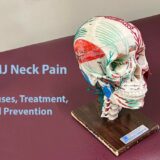Health Care and Addiction: Instead of Opioids, Prevent Chronic Pain
Preventing Chronic Pain is Better than Opioid Use
A lot of work has occurred and is underway to prevent unnecessary major health conditions such as avoidable chronic pain. While it remains an enigma to much of the general public, more health care systems and the scientific community are taking notice. Health care and addiction issues have become center stage across Minnesota and the United States – especially for pain providers who’ve leaned on reducing pain levels with opioids.
Chronic pain is the primary symptom of many health issues, and we need to prevent it – without adding to the opioid crisis.
The Institute of Medicine and the National Pain Strategy both recognize that chronic pain conditions are:
- the main reason for the use of opioids
- the No. 1 cause for seeking medical care
- the primary factor behind disability
- and the No. 1 driver of rising health care costs
Many people assume that cancer, heart disease, and diabetes are the big factors behind our explosive medical system costs. However, the use of opioids in the United States to treat chronic pain alone burdens the system with over $700 billion in health care and lost work. As the number of people facing severe depression and anxiety escalates, treatment options should look more deeply at causes and less on the medical over-use of opioid durgs.
This is equivalent to 25 percent of total health care costs and nearly 5 percent of the U.S. total gross national product. It leaves many people addicted and scrambling for pain relief.
Pain clinic practitioner groups are facing the fact that there’s too much opioid use in the United States and local communities. With how easy it is to abuse; it is challenging for pain specialists to monitor who is following prescription instructions.
The CDC and FDA are keen to gather ideas to minimize these opioid abuses and establish useful guidelines for pain clinics and pain prescription writers. The primary suggestion that doctors, hospitals, and pain clinics should consider is using nonopioid and nonpharmacologic treatments for chronic pain – at least to begin with.
To address the main problem requires a willing investment of time to research better chronic pain treatment options. On a day-to-day basis, the focus is on addressing the presenting problem that the patient’s in for – which is commonly, too much pain. It is easy for any one physician to simply write an opioid prescription. But if the patient in turn becomes one of the many who get hooked on taking opioids to be more in emotional control and less in pain, then in the long run problems escalate.
CDC Guidelines for Prescribing Opioids for Chronic Pain — United States, 2016
The 2016 CDC Guideline for Prescribing Opioids for Chronic Pain is intended as the basis for sweeping policy decisions, as lawmakers and health leaders struggled to contain the nation’s overdose crisis. Many states, including Minnesota, are adopting laws and regulations that set limits on prescribing, and health insurers also crafted policies that will align.
The risk is if pain specials and doctors become too wary of giving opioids at all, it may lead to disruptions of pain treatment. A result may be the extreme or prolonged physical and mental agony of a person with heightened depression levels or even the risk of suicide.
The answer to the opioid epidemic may involve better ways of triaging medical treatments than the task of coming up with new chronic pain treatments. It also involves further eduction about what a pain disorder is.
Providers need to avoid grouping things together like back or jaw pain as a single entity. A person’s pain itself is a symptom, not a diagnosis. The diagnosis may be facet-mediated jaw pain which might be an inflammatory pathology to the jaw joint having an inflamed nerve root causing the temporomandibular to flare up. For example, a treating a pulled jaw muscle can be treated without a need to opioids.
Avoid Overtreating a Chronic Pain Patient with Opioid Prescriptions
Treating the root cause of acute pain is a better way to resolve it than simply prescribing opioids.
It is all too easy for a person to end up on multiple medications by multiple providers for multiple problems. When individual healthcare providers assess the patient from the perspective of their own specialty, which is typically narrow, who is thinking about the overall picture? We cannot expect the pain patient to link their prescription risks together; better clinical judgment and awareness are needed to treat each person’s problem with a holistic approach.
We believe that suicide awareness and prevention skillsare essential for chronic pain managers.
How many antidepressant medications are used that also bleed over into the pain community? Can you determine if an opioid anxiety medication will confuse or clarify what that patient’s perception of pain is?
First, consider the medication profile of a new patient, your answer may be to simply understand the prescriptions that they’re already on for another disease state to resolve their pain issues. Chronic pain providers should focus on how to develop a more patient-centered model. This will improve clinical outcomes and provide better patient care and protection against opioid addiction risks.



One comment
Pingback: ปั่นสล็อตฟรี ตลอด 24 ชั่วโมง ได้ที่ LSM99